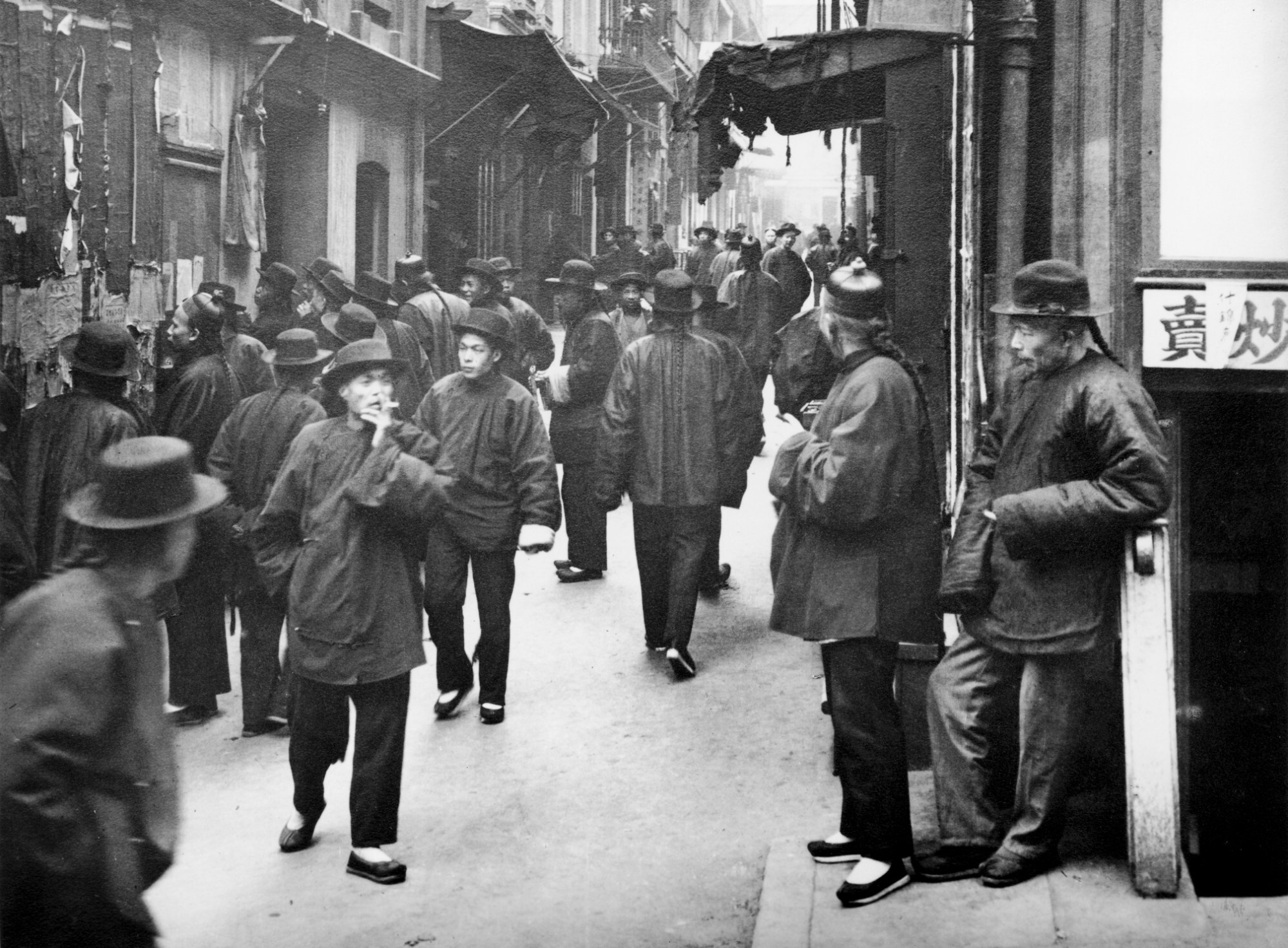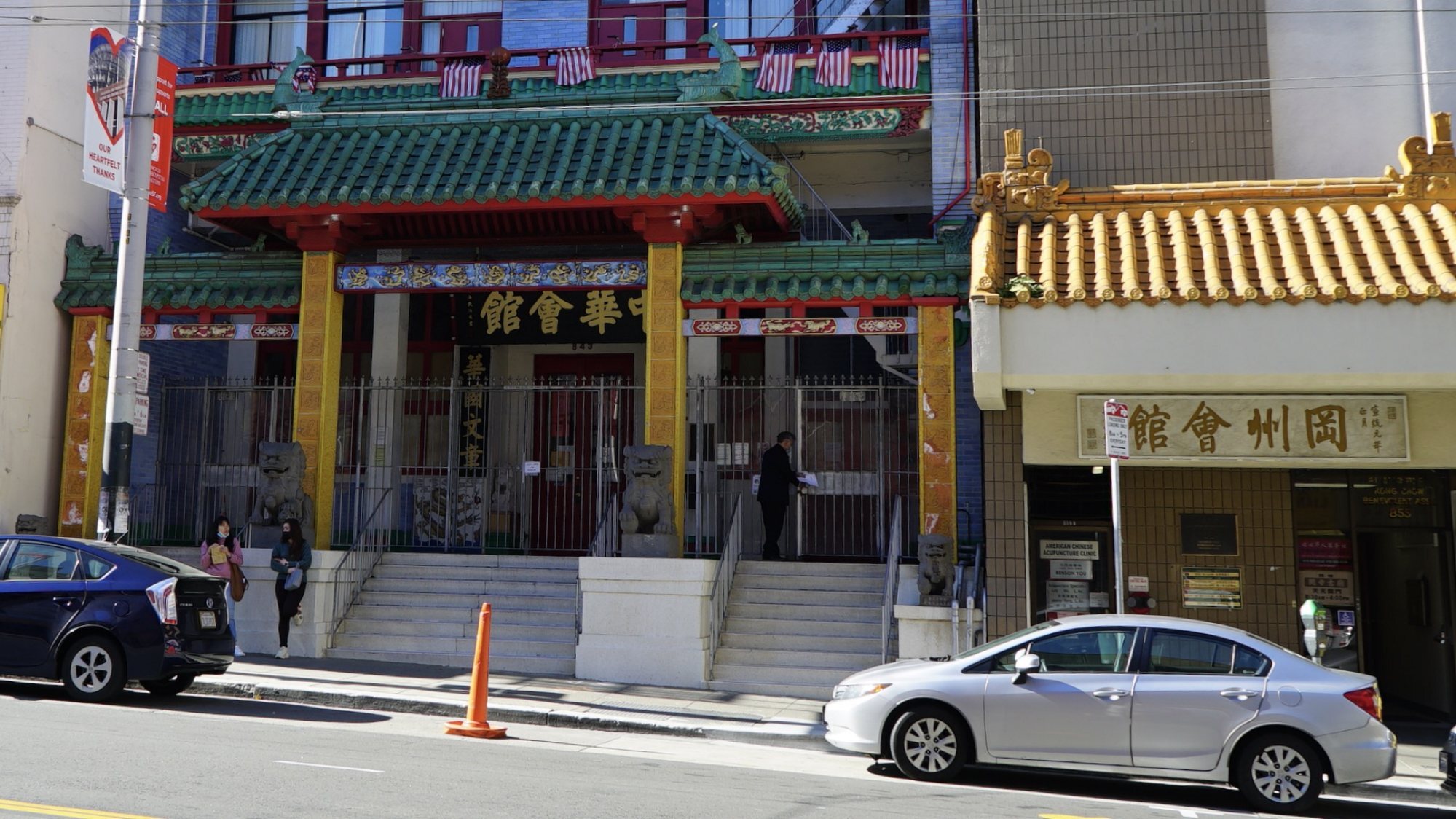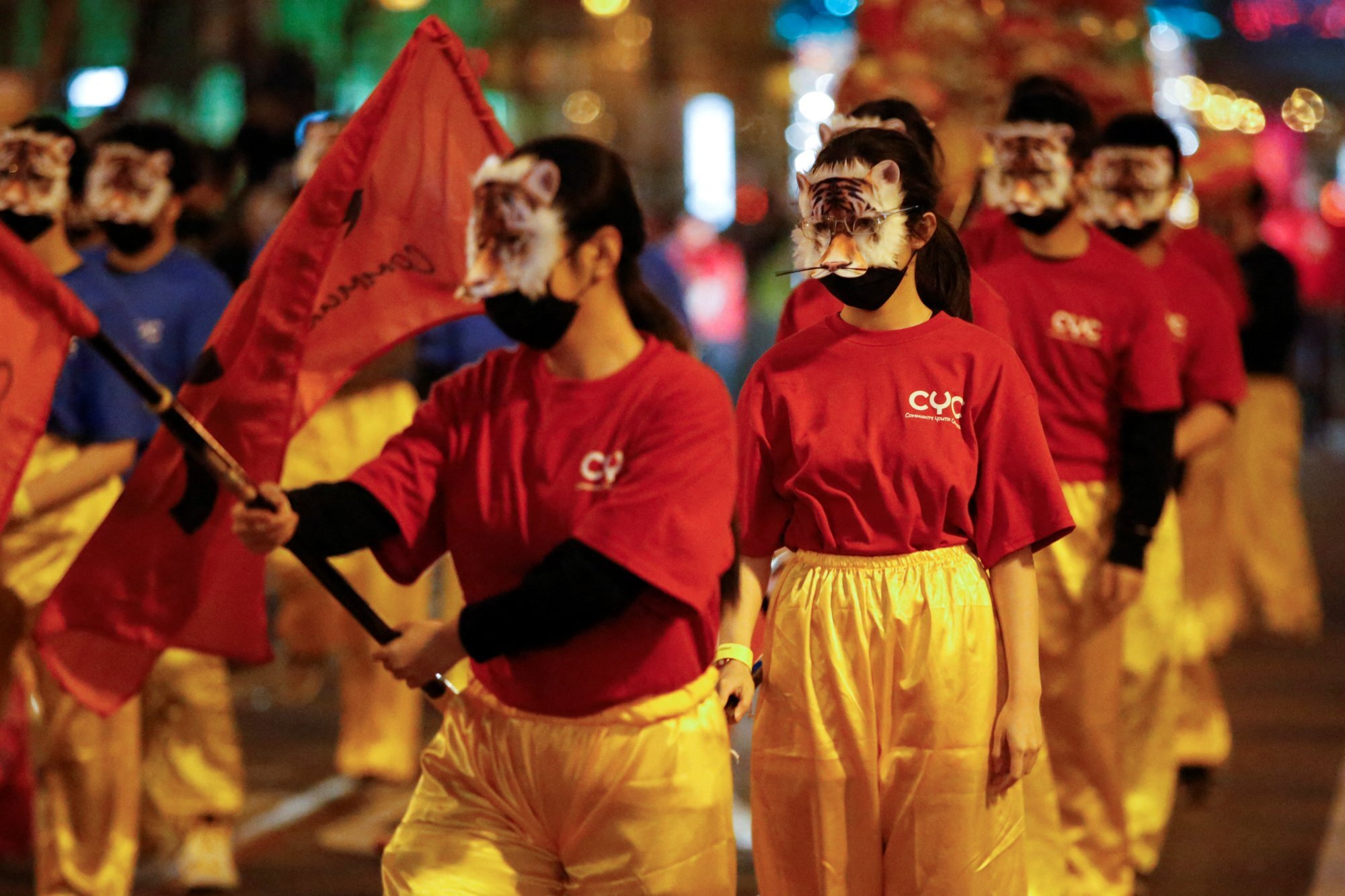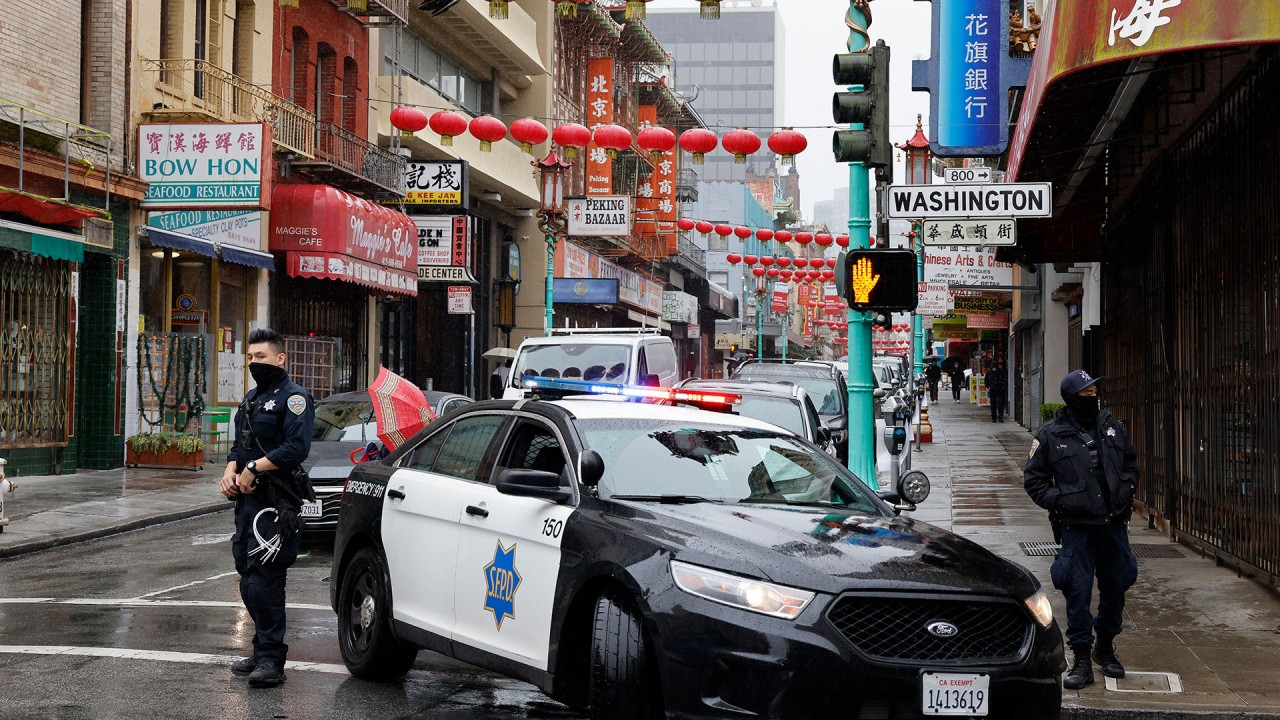
Is the sun setting on San Francisco’s Six Companies?
- Once a de facto embassy for Chinese immigrants in the US, the Chinatown association faces declines in finances and influence
- Now called the Chinese Consolidated Benevolent Association (CCBA), the group has been eclipsed by other service organisations
For a second year running, the Lunar New Year came and went quietly for the members of the once-grand Six Companies in San Francisco’s Chinatown.
In earlier years, hundreds of the community association’s members would flock to New Asia’s banquet hall on Pacific Avenue – now converted to a grocery store during the pandemic.
The traditional bash, held to invite luck and fortune, would have been too risky for the ageing members, anyway, amid a wave of Covid-19 cases fuelled by the Omicron variant.
Forged from an alliance among Chinatown’s six largest regional associations, the Six Companies – now officially seven and formally called the Chinese Consolidated Benevolent Association, or CCBA – was once the largest group supporting immigrant Chinese in the United States.
From providing jobs to labourers fresh off the boat to advocacy of Chinese civil rights to helping organise self-defences from mobs, the Six Companies permeated every aspect of early Chinatown life.
Now it faces threats that echo those early struggles: Covid-19 fears have disproportionately hit Chinatown businesses, and a surge in hate crimes have targeted its residents. But the young men who once filled association and tong halls are old now, and their children have moved away.
“How can [recruitment] go up when most of them are people like me, who are retired and help out?” said Robert Wong, a CCBA member who answered the headquarter’s phone a day before the start of the Lunar New Year.
“If we had enough money, we could give to people here in Chinatown, to the community in San Francisco, right? But no. The associations don’t help us, we don’t have any income. How are we going to survive?”
A top CCBA official and a former CCBA president did not respond to emailed interview requests.

Facing stiff prejudice, early Chinese newcomers to San Francisco formed mutual aid organisations along regional or extended family ties, called “associations”, “halls” or “tongs”.
As the Cantonese tong entered the American vernacular, the word eventually became the moniker for organised crime in Chinatown, although most groups were law-abiding.
Transnational merchants established these fraternal organisations and arranged American work contracts before importing Chinese labourers, said Dr Huping Ling, author of Surviving on the Gold Mountain and a scholar of Chinese-American history and international migration.
The business these merchants engaged in – collecting illiterate labourers, most from southern China, for exploitation in the US – became known as “selling piglets”.
“The tongs provided leads for where to live and find jobs, provided credit and helped [newcomers] set up a ‘funeral club’ fund,” said Linda Sun Crowder, an anthropologist and lecturer at California State University, Fullerton.

“Arrangements for a proper funeral could be held for the migrant – and to assure [for] a respectable number of mourners,” Crowder added. “They organised Ching Ming [grave cleaning] festivities and still do to this day.”
The isolationism of China, then in the last years of the Qing dynasty, and the lack of an effective diplomatic presence in the US, left a vacuum, according to Yucheng Qin, author of The Diplomacy of Nationalism: The Six Companies and China’s Policy Toward Exclusion.
The Six Companies – a name Americans gave the association – effectively became the de facto voice of Chinese in America as well as the nation they’d left behind, representing both to Americans and even moulding Qing policies.
In 1943, the Magnuson Act repealed the Chinese Exclusion Act of 1882. In successive legislation, Chinese women were finally allowed to immigrate as individuals – not as family dependents – and in greater numbers.

The changes opened up Chinatown’s bachelor societies and gave opportunities for real families and futures in America. Crucially, these shifts occurred as the US civil rights movement gathered force from the 1950s through the 70s.
The cultural nexus and political leadership provided by the CCBA – which used its influence to push for Chinese-American civil and business rights – meant later generations could thrive, move out of Chinatown and demand further political and economic opportunity.
Such results, however, may have made the Six Companies a victim of its own success.
“We’re a charitable organisation. We don’t charge that much to the people, to the tenants,” Wong said. “We’re self-supported … Every association owns property, OK, it’s just that, are [the tenants] paying rent? No, some of them are not.

When asked about other possible streams of income, Wong dismissed dues. “We don’t have association fees here at CCBA. But some of the smaller associations, say, US$5 a year … I mean, if it’s US$5 a year or US$10 for the lifetime … do you think that’s income?”
Instead of being the “dragon head” that once spoke with the authority of the Chinese government and ran Chinatown socially and economically, the CCBA gradually became “kind of passé”, said Ling.
“They were slowly replaced by college-educated and American-born Chinese-Americans [who] were more culturally aware and politically savvy, and they organised newer organisations.”
Those groups included the Organisation of Chinese Americans – now known as the OCA-Asian Pacific American Advocates – which styled itself after the NAACP. It rose in the 1970s along with the Chinatown Youth Center (now Community Youth Center, or CYC), which provides youth services and training.
Sarah Wan, the CYC’s executive director, said that unlike the CCBA, groups like hers “have longer-term sustainability as social service organisations, 501(c) (3)s, where we actually can apply for grants for funding from the city, or government funding”.
Compared to the CCBA volunteer board, the CYC employs tens of full-time staff to run programming and services. “It’s actually very labour intensive – an institution with a purpose to serve the population,” Wan added.
US Chinatown communities create a new future despite coronavirus
Associations “became open to women, I think, in the 1960s,” Ling said. According to her research, the first woman elected by a member association to the CCBA’s board was in 1996 – more than 100 years after the association’s inception.
New immigrants have more options now, according to Paula Zeng, a young CYC programme coordinator who grew up in Chinatown. Zeng, who immigrated with her parents as a toddler in the 1990s, recalled that “they would go job-hunting on their own … it’s just that we don’t feel like we need to join organisations like that”.
“The new immigrants these past two years – I don’t know, I think their mindset’s different. They would not want to live in Chinatown,” Zeng said.
She cited better educations but was quick to add that the parents of some of her friends had joined associations and that she once had considered joining one. She is currently not interested, though.
Asked whether women could still only join the Six Companies as the wife or daughter of a male member, Wong deferred to the associations. “Gender, I don’t know, because, we here at CCBA, we got a woman president too,” he said. “For my association, we’ve got – we don’t have too many, but we do have women, and we do have guys, too.”
The plaintiffs claimed that one defendant had violated previous CCBA resolutions by leading an “invalid” resolution to remove the traditionally displayed ROC flag from atop the headquarters, replacing it with the US flag in May 2013.
The plaintiffs also alleged that the other defendant had negotiated a “skeletal one-page contract” with a construction company to renovate Victory Hall, an important CCBA venue.
Though renovations “ballooned from US$500,000 to approximately US$1.2 million,” the work on Victory Hall led to a violation notice in 2013 for noncompliant structures.

Like the ageing of Chinatown itself, its associations have settled into a comfortable but twilight role. Still, Wan, who moved to San Francisco as an unaccompanied high schooler in the 1990s, considers them unique and irreplaceable.
“I think the Six Companies are still the backbone of the Chinatown community,” Wan said. “A lot of elders or a lot of new immigrant families, that’s still their first stop when they first come here … the first thing they [do when they] come is go to the association to meet all the uncles and aunties.”
Supporters say the CCBA still plays an important role in the community. According to Wong, at the start of the pandemic, the CCBA raised funds for then-scarce PPE for hospitals and gathered donations for those affected by pandemic and hate-driven crimes like robberies.

On February 1, the first day of the Lunar New Year, Chinatown’s streets were strewn with the pink paper shells of firecrackers from celebrations. The CYC held one too, taking part in Chinatown’s famous Chamber of Commerce-hosted parade down Market Street on February 19.
While many association halls remain closed, the return of the annual parade is a hopeful sign for their revival.
“It’s still very natural that they start to branch out, right?” Wan asked. Still, she noted, the newer organisations “make sure our young people will always understand why it’s so important to have the spirit of giving back, remembering where we come from.
“In Chinese, we always say, ‘When you drink the water, you think of where it’s coming from.’”




